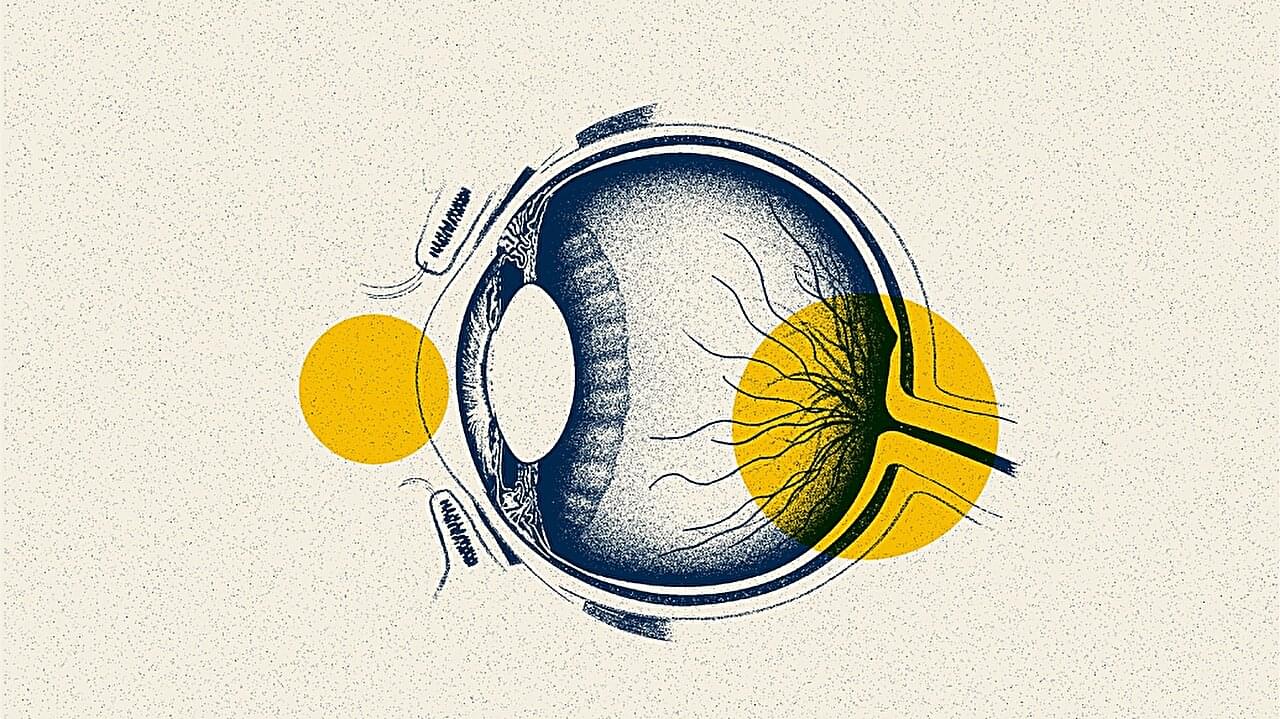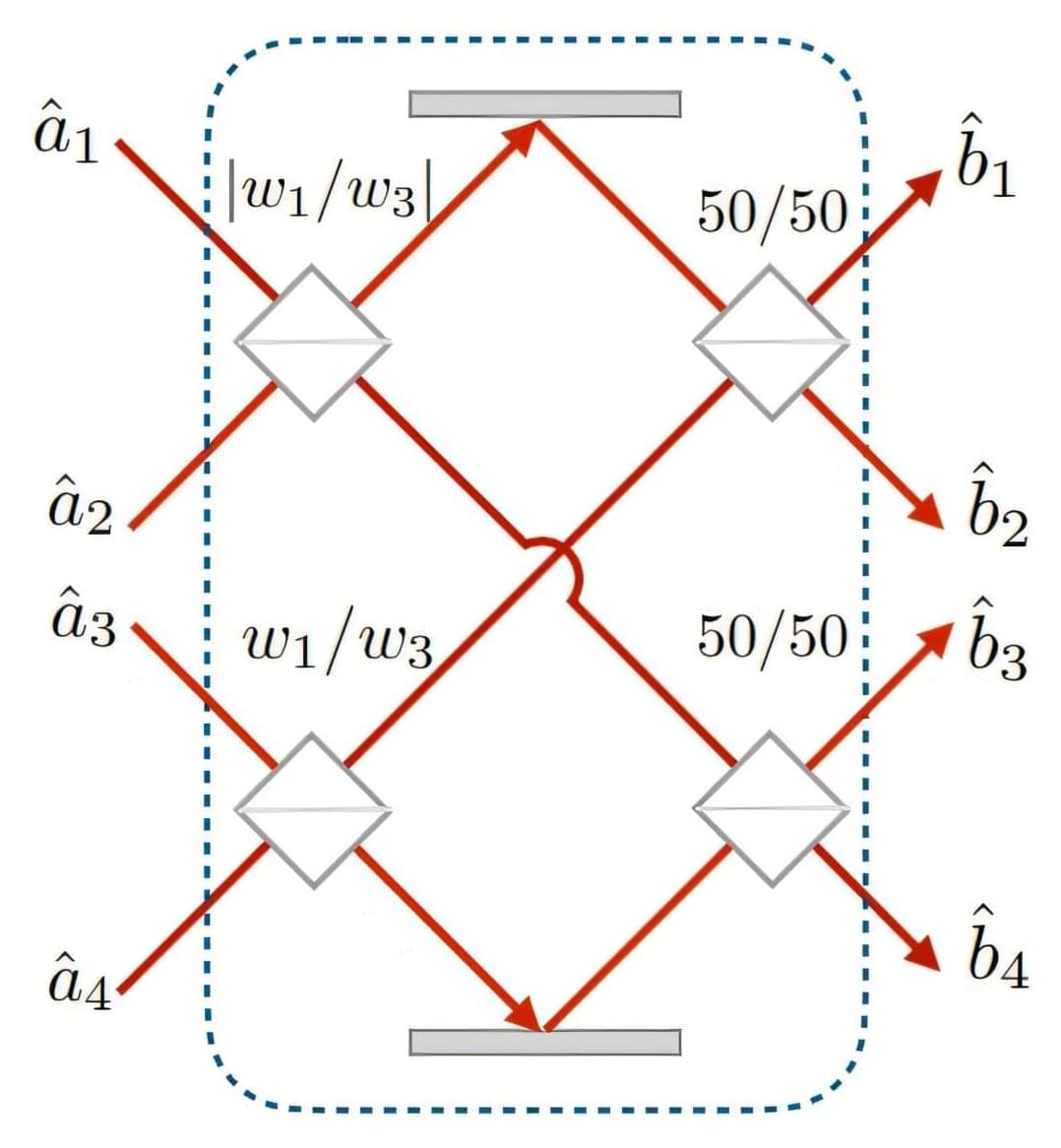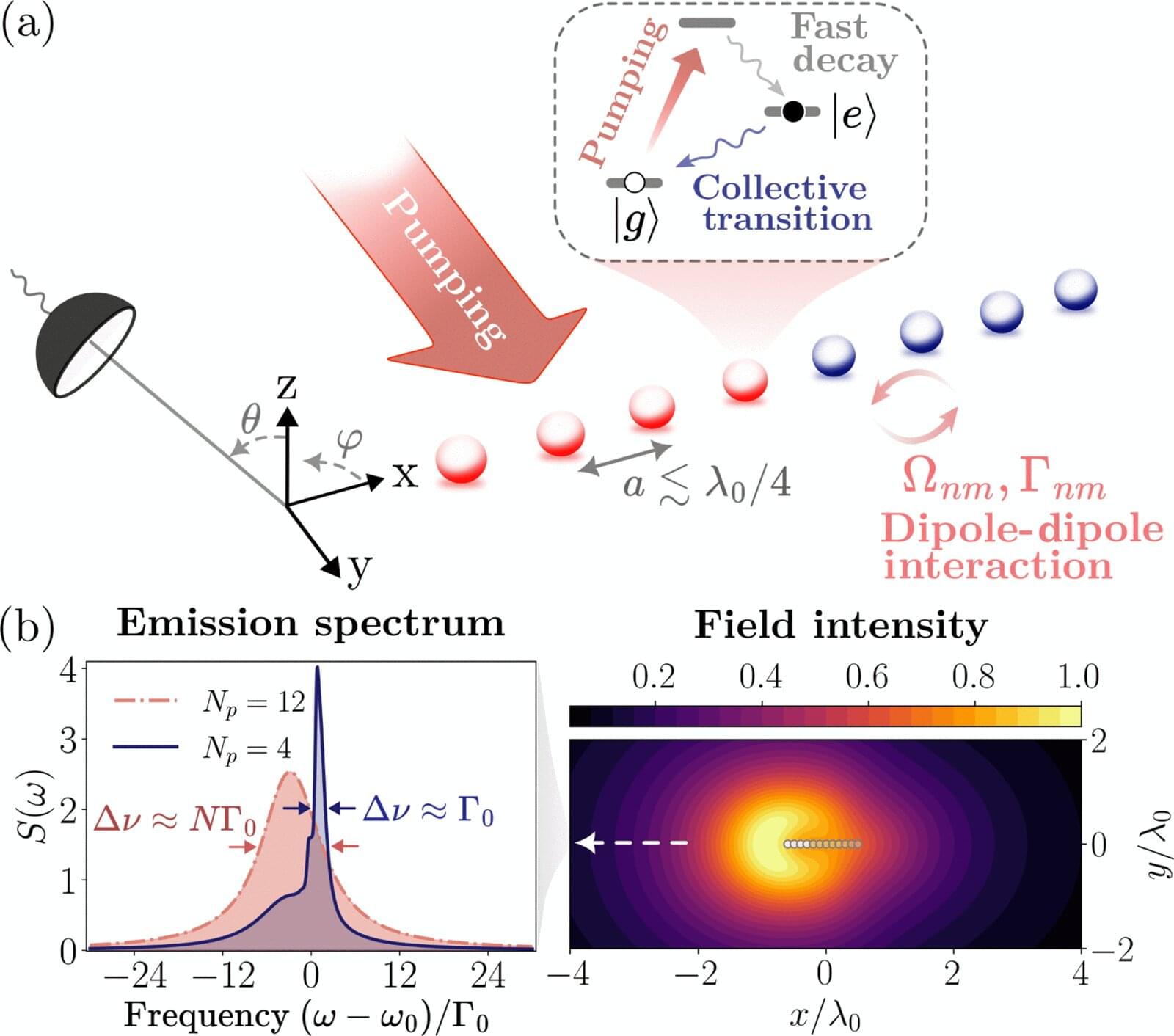A team of physicists from the University of Innsbruck and Harvard University has proposed a fundamentally new way to generate laser light: a laser without mirrors. Their study, published in Physical Review Letters, shows that quantum emitters spaced at subwavelength distances can constructively synchronize their photon emission to produce a bright, very narrow-band light beam, even in the absence of any optical cavity.
In conventional lasers, mirrors are essential to bounce light back and forth, stimulating coherent emission from excited atoms or molecules, and thus light amplification. But in the new “mirrorless” concept, the atoms interact directly through their own electromagnetic dipole fields, given that interatomic spacing is smaller than the emitted light’s wavelength. When the system is pumped with enough energy, these interactions cause the emitters to lock together and radiate collectively—a phenomenon called superradiant emission.
The team led by Helmut Ritsch found that this collective emission generates light that is both highly directional and spectrally pure, with a single narrow spectral line, in cases where only a fraction of emitters are excited by a laser and the rest of atoms remain unpumped. Since this passive emitter fraction is not broadened by the driving laser or power broadening, it effectively acts as an optical resonator for the active emitters, in analogy with a conventional laser where the optical resonator and the gain medium are separate physical entities.









